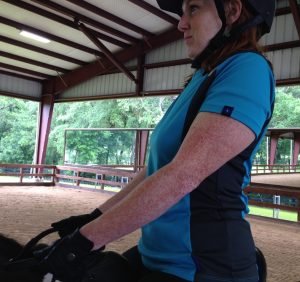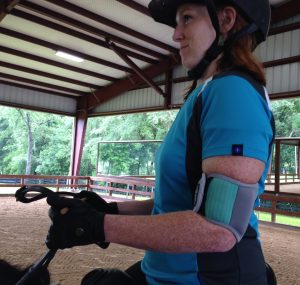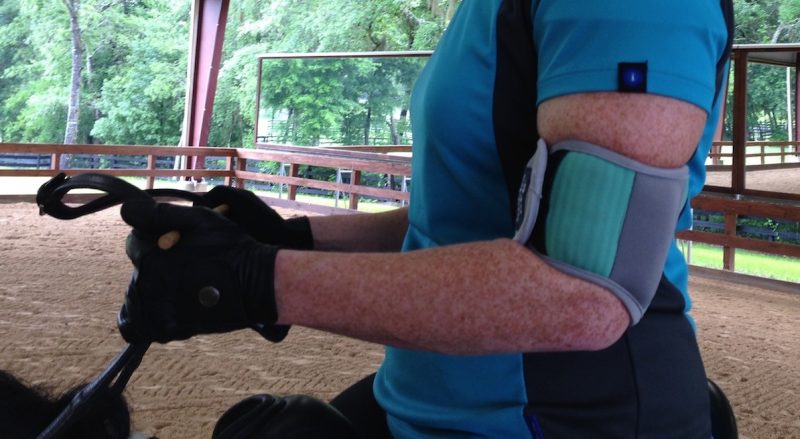
Do you tense your shoulders drawing them upward? Do you force your hands down onto the horse’s withers to keep your hands “low” and “quiet”? Does your horse go above the bit? Do you try to pull his head down? Riding with heavy elbows and floating hands will allow your horse to lower his head without force and enable you to keep your weight back and shoulders relaxed while following the horse’s mouth.
Next time you ride notice what you do with your hands. Do you push your hands down onto the withers? Does this cause you to lean forward? Perhaps you widen your hands and attempt to pull your horse’s head down when he goes above the bit. Maybe you straighten your elbows and raise your shoulders upward. Does your horse constantly jerk the reins out of your hands and pull you out of the saddle? These can be signs that he doesn’t like you pulling on him!
Attempting to pull your horse’s head down is generally ineffective because, not only is your horse stronger than you, but pulling down also puts your weight on the horse’s forehand which makes it even more difficult for him to lower his head. Often riders tense the shoulders in addition to pushing the hands down. This shoulder tension raises your center of gravity, which makes you unstable and your contact harsh and puts your weight forward onto the horse’s forehand no matter how hard you try to lean back. This rider position can cause your horse to raise his head even more!

To solve this problem we need to return to the time honored adage, “maintain a straight line from elbow to bit”. This means that your hands and forearms follow the line to the horse’s mouth regardless of where your horse puts his head. Following that line keeps the bit in the same place without the undue pressure created when pulling or pushing downward. In order to maintain this line you need to let your hands float upward when your horse raises his head. Floating your hands also has the benefit of keeping you from pitching forward onto your horse’s forehand. As your horse relaxes, his head will lower, at which point you lower your hands to maintain the straight line from elbow to bit. Following the line this way neutralizes any unpleasant effects of the bit, keeps you safe and allows you to drop your shoulders.
To change your position, use a pair of ankle weights. Strap them around your upper arm just above your elbow (add a Velcro strap if they are too short to go around). Ride with the weights to remind yourself to let your shoulders rest on your ribcage and your upper arm hang straight down with heavy elbows. Float your hands upward like corks on water so that they can follow your horse’s mouth, wherever it is. Your floating hands will be able to go up and down with your horse’s head easily if your elbows stay heavy. If one hand drops more than the other, place a short stick under your thumbs. This will prevent your hands from going below the level of your horse’s withers.

Use this Murdoch Minute to enable your hands to follow your horse’s mouth by keeping your elbows heavy. Heavy elbows and following hands let you stay back in the saddle so that you don’t put him more on the forehand. Give him the time to find his balance and he will no longer need to raise his head to keep from falling. And always remember to enjoy the ride!




